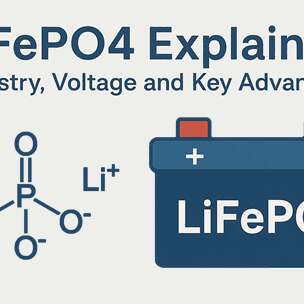LiFePO4 Buying Guide: Important Specs, BMS, Chargers and Brand Notes (Bluetti, Redodo, Victron)
If you’re shopping for a LiFePO4 battery (12V, 24V, 48V or big 100Ah to 300Ah packs), this short guide will help you cut through specs and avoid surprises. LiFePO4 delivers long cycle life, safer chemistry, and predictable voltage, but the devil lives in the details: voltage, BMS, C-rate, and charger compatibility. #LiFePO4 #batteries
What to check first
- Nominal voltage: LiFePO4 cells are
3.2Vnominal. Packs: 4 cells = 12.8V, 8 cells = 25.6V, 16 cells = 51.2V nominal. - Charge voltage: target per cell
3.55-3.65V; full-pack examples:14.2-14.6Vfor 12.8V packs,29.1-29.2Vfor 25.6V packs,58.4Vfor 51.2V packs. Set your charger appropriately. - Capacity & format: common formats like 12V LiFePO4 100Ah, 12V 200Ah, 24V 100Ah/200Ah, 48V LiFePO4 are the most usual cases; pick capacity for usable Ah at your required DOD.
- C-rate (charge/discharge): specifies how fast you can safely pull or push current; many consumer packs are
0.5C-1Ccontinuous, check peak output and BMS limits.
BMS matters more than you think
A good BMS LiFePO4 protects cells (over/under voltage, overcurrent, temperature), balances cells, and sometimes exposes communication (CAN, RS485) for inverters or solar controllers. If you plan parallel packs or to integrate with a system like Victron, ensure the BMS supports balancing and proper charge cut offs, and that the manufacturer documents CAN/communication protocols.
Chargers and solar
Use a charger or MPPT configured for LiFePO4 charging profile (CC then CV, no high voltage float). For PV systems, set the charge controller’s absorption to the pack full voltage, and avoid lead acid float settings which can overcharge LiFePO4.
Brand notes: Bluetti, Redodo, Victron
- Bluetti and Redodo offer integrated LiFePO4 power stations and standalone battery modules; they usually include internal BMS and tailored chargers; check whether their units allow external inverter control or CAN signals for SOC reporting.
- Victron gear (inverters, MPPTs) is widely compatible with LiFePO4 if you configure the battery settings to the correct voltages and enable LiFePO4 mode; Victron also supports battery assistants and CAN/VE direct integration for advanced control.
Bottom line: compatibility is mostly about matching nominal voltage, max charge/discharge current, correct charge profile, and ensuring communication between BMS and your inverter/charger.
Final checklist before buying
- Match pack voltage to your inverter/charger.
- Verify max continuous and peak currents.
- Confirm BMS features and communications.
- Set chargers/MPPTs to
3.55-3.65Vper cell equivalents. - Read the datasheet, not just marketing blurbs.
Smart shopping avoids surprises and gives you years of dependable service from your LiFePO4 battery.

